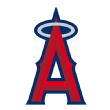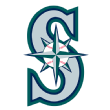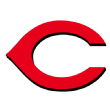Everyone has likes and dislikes. While I provide a comprehensive set of fantasy baseball rankings each preseason, a mere rankings set or cheat sheet doesn't tell the full story about a person's opinion on certain players. As I head into my drafts, I highlight on my own cheat sheets a handful of players who I'm avoiding -- though it's true that every player has a good price, if it falls to the point you judge he's worth the risk.
These are my "Not on my team!" players, with the explanation for the name obvious. They take into account current average draft position (ADP) data, both on ESPN and offsite, as well as what I've seen in drafts in which I've participated or witnessed.
For this exercise, I've excluded many of the players with heightened injury questions entering the season, including Clayton Kershaw, Carlos Martinez and Shohei Ohtani. In recent seasons, I've increasingly faded players whose timetables had them questionable or worse for Opening Day, considering how often those stories end in disappointment from a draft standpoint in fantasy leagues. Kershaw is one of the most difficult such examples this spring, with the ability to pitch like one of the 10 best at his position when healthy, but with the risk to miss a quarter of the season or worse.
To me, those are obvious "Not on my team!" picks. Here are nine others, however, that I'm avoiding and/or rarely drafting to my teams entering 2019:

Cody Allen, RP, Los Angeles Angels
The $8.5 million contract he signed with the Angels in January, which came with the declaration that he'd be closing for them, will probably mask the fact that in the final two-plus months of last season, he wasn't very good. From July 10 forward, Allen had a 6.39 ERA, 13.9 percent walk rate and 1.74 home runs-per-nine innings ratio in 33 appearances, with lefties slashing .252/.355/.445 against him including six home runs. Allen's year-over-year pattern of decreasing average four-seam fastball velocities is troubling -- it bottomed out at 92.9 mph in the month of September, well beneath the 94.9 mph he averaged in 2015 -- and it hasn't rebounded this spring. Unless he can either find it again, rein in the walks or reduce what was a 30.8 percent ground ball rate last season, he's the proven closer at greatest risk of a quick demotion. In this matchups-driven age, I'm less apt than ever to pay for that label over skills.

Edwin Encarnacion, 1B, Seattle Mariners
He has enjoyed seven consecutive seasons of 30-plus home runs and has totaled 263 homers during that time, both of those major-league-leading marks, and was a top-10 first baseman on our Player Rater last season. Still, Encarnacion showed signs of slowing in 2018, predictably at the age of 35, most notably posting his lowest contact rate (73.6 percent) since his 2005 debut, his lowest isolated power against left-handed pitchers (.167) since 2007 and his worst swinging-strike rate against 95-plus-mph pitches (14.4 percent) since 2009. He's also moving to a more pitching-friendly ballpark on a team in the midst of a rebuild, threatening his counting numbers around said home runs. Encarnacion's downslope on the age curve might continue at its recent slow rate, but I fear there could be a steep decline in his near future.

Kyle Freeland, SP, Colorado Rockies
He was the No. 18 starting pitcher both on our Player Rater as well as in fantasy points scored, the No. 4 pitcher in terms of wins above replacement (8.4) and the fourth-place finisher in the National League Cy Young Award race in 2018. Still, a lot went right for Freeland on the way to those accomplishments, most notably getting an extremely large amount of favorable calls, leading the majors with 139 called strikes on pitches thrown outside of the rulebook strike zone. He also had a below-league-average strikeout rate (20.5 percent, compared to a 22.3 percent average), the 10th-lowest BABIP (.288) by any ERA-qualified Rockies pitcher in history and the 42nd-ranked SIERA (skill-interactive ERA) (4.35) among 57 ERA qualifiers in 2018. Freeland is due for at least some regression this season, and as a Rockies pitcher he's at much greater risk of his ERA and WHIP blowing up. I wouldn't take the chance on him even in an NL-only league.

Jon Lester, SP, Chicago Cubs
In many of the early drafts I've done, fantasy managers are taking a wise stance to pay up for the premium starting pitchers, but paying conservatively for the lower-to-middle-tier options. Lester's history seems to be placing him closer to the former than latter, his ADP in ESPN leagues 156th overall (166.1 average) and 39th at his position. Unfortunately, last season he seemed to show his age, his FIP, xFIP and SIERA all registering his highest in 11 seasons. Lester also finished last season on a down note, posting a 4.57 ERA, 1.56 WHIP and 19.8 percent strikeout rate in 16 starts over the Cubs' final 82 regular-season games (July 1 forward), including a pair of terrible outings that hinted he could be becoming more of a matchups candidate than a locked-in pitcher. Only if his price stalls or he lingers in drafts to the point that he'd be one of my final mixed-league starters do I consider him worth the chance.

Adalberto Mondesi, SS, Kansas City Royals
I know, I know. I've argued plenty against Mondesi already this preseason, and I've softened my stance ever-so-slightly by inching him up to roughly my No. 100 overall player. He's highly likely to play regularly, bat atop the Royals' lineup and get a good number of green lights to again fuel his stolen-base total. The problem is that he's going among the top 50 overall players most everywhere offsite, not to mention he has generated constant offseason buzz that has made him one of the most debatable players. Mondesi's stolen base attempt rate -- 48 percent, using Baseball-Reference.com as the source for opportunities -- was unsustainable and one of the century's highest by any player. He also ranked among the game's worst with 4.8 percent walk and 18.2 percent swinging-strike rates during his limited time in 2018 -- traits that might make him susceptible to extreme streakiness and a low seasonal batting average. I don't like paying elite-tier prices for roles ahead of skills, which is why I don't anticipate getting any shares of Mondesi this season.

Buster Posey, C, San Francisco Giants
Catcher is a precariously thin position this season, a problem compounded by Salvador Perez's injury, and Posey is one of the "name brands" at the position who will, in all likelihood, be overpriced as a result. Citing industry ADPs is a tricky task, considering the varying treatment of catchers -- two active versus one, 10- versus 12- versus 15-team leagues, or points-based leagues that reward the most durable -- but Posey in ESPN leagues is 107th (117.0), which is simply too early. He's coming off hip surgery to repair a microfracture, was eased in slowly during spring training and was exhibiting diminished power beforehand, and his isolated power is in a four-year pattern of decline reaching a career-low .098 in 2018. From an ESPN/one-catcher-league angle, I'm either investing in one of the top catchers or waiting until the final pick of my draft to fill the position, considering there are 12-15 perfectly adequate options. Posey fits in between, but he's being valued too closely to the elite for my tastes.

Yasiel Puig, OF, Cincinnati Reds
In ESPN leagues, he's not being exorbitantly priced, going 95th on average (101.9), but everywhere else he seems to be getting at least a three-round bump. Puig has generated a lot of industry excitement after batting .296/.367/.600 with 10 home runs and four stolen bases in 39 games (postseason included) from Sept. 1 forward, then being traded into a more hitting-friendly environment in Great American Ball Park. They're fair points, but so is the fact that Puig's value has varied widely from year to year: He hasn't finished among the top 100 overall on our Player Rater since 2014, when the game's offensive environment was more pitching-oriented. Puig's 10 stolen bases from Aug. 1 forward (again, postseason included) were the much more interesting development from a skills perspective, and probably his best path to exceeding his current ADP. I'll take him if he's there at pick 100 or later, but can't make the case that he's more valuable than that.

Travis Shaw, 3B/2B, Milwaukee Brewers
I was more of a believer in Shaw before Mike Moustakas re-signed with the Brewers, but now that both natural third basemen are back with the team, I'm planning to pass on him. This spring, the Brewers are dabbling with Moustakas at second base, a hint that they regard him the more integral part of their infield, especially considering Shaw was the one who experimented there during the latter stages of 2018. Shaw's value is also tied primarily to power, something that's less difficult to acquire in this offensive environment, and his Statcast metrics -- average exit velocity, hard-contact rate and barrels -- were closer to league-average than the league's leaders. He seems to be getting a draft-stock bump due to his dual position eligibility (second and third base), but that eliminates almost any chance at him turning a profit.

George Springer, OF, Houston Astros
His current ADP -- 47.8, or 44th overall -- is hardly an unfair one, but it still resides on the high end of what I consider his true value range. Don't overlook the fact that Springer has finished 78th, 53rd and 104th overall on the Player Rater the past three seasons, during which time he averaged 147 games played and 110 runs scored as the leadoff man for the majors' fourth-highest-scoring offense. He's a player whose reputation remains greater than his true talent, with his poor performance stealing bases a potential problem going forward. To that end, Springer's 48.8 percent success rate on stolen base attempts during the past three seasons was the worst in baseball (minimum 20 attempts). He also puts the ball on the ground at too high a rate to significantly elevate his power output to compensate for it, which means that he's more likely to spin his wheels, fantasywise, than improve upon his recent numbers.
Other players I'm avoiding or rarely drafting in my leagues: Jose Abreu, Tim Anderson, Ramon Laureano, David Price and Dereck Rodriguez.
